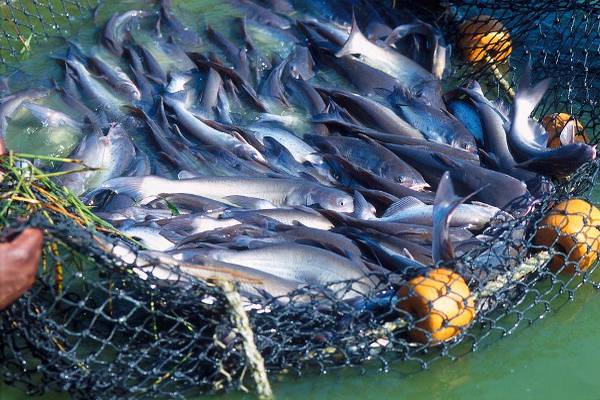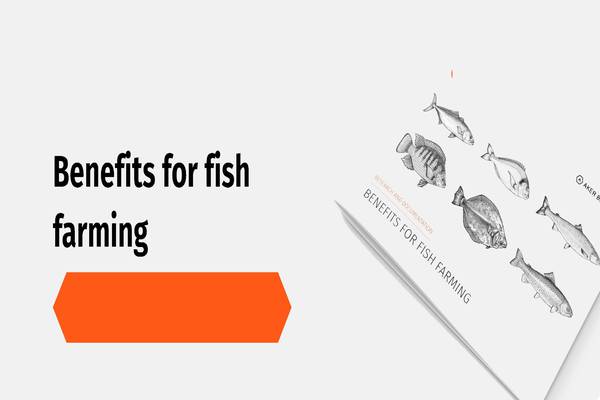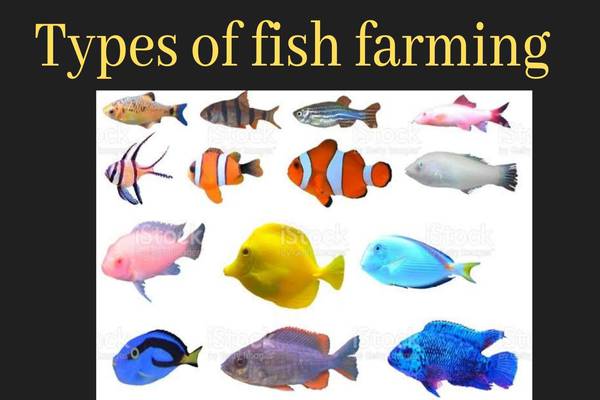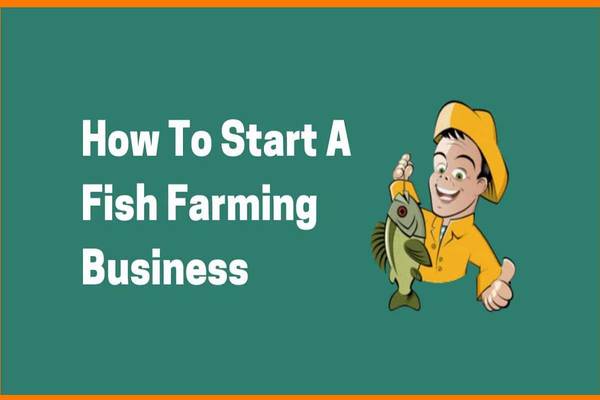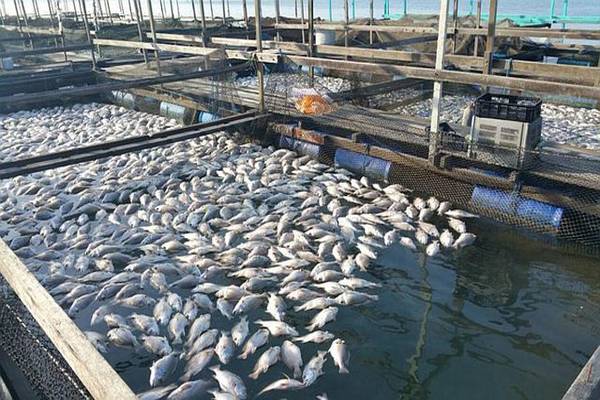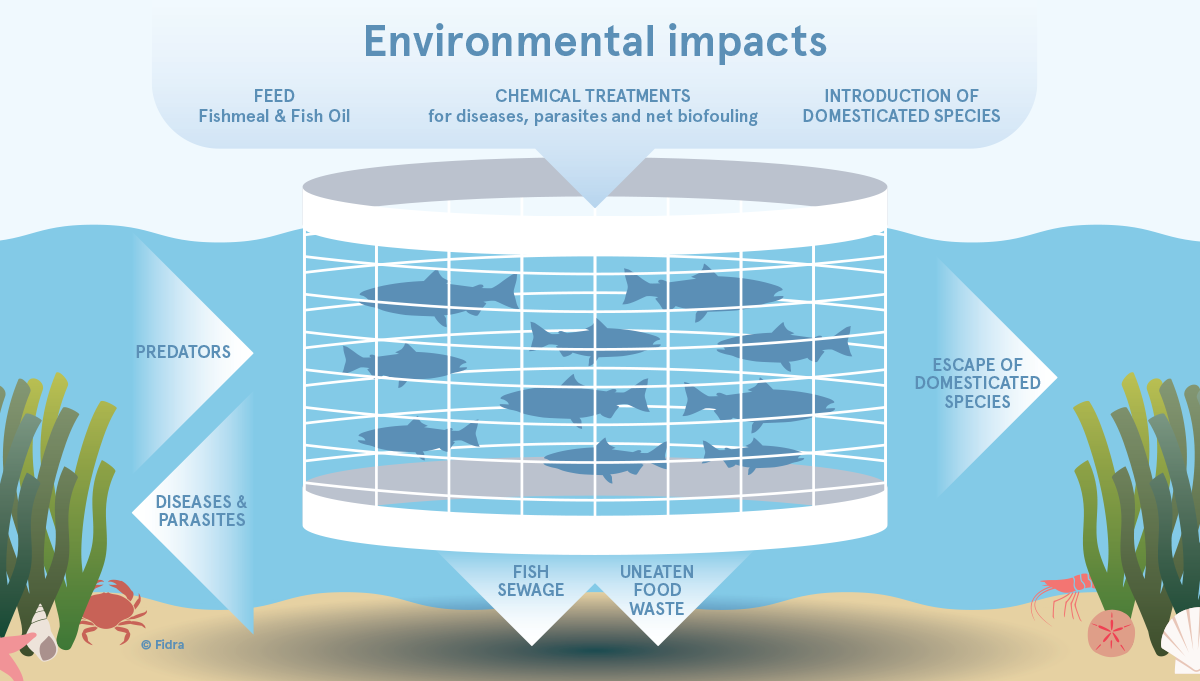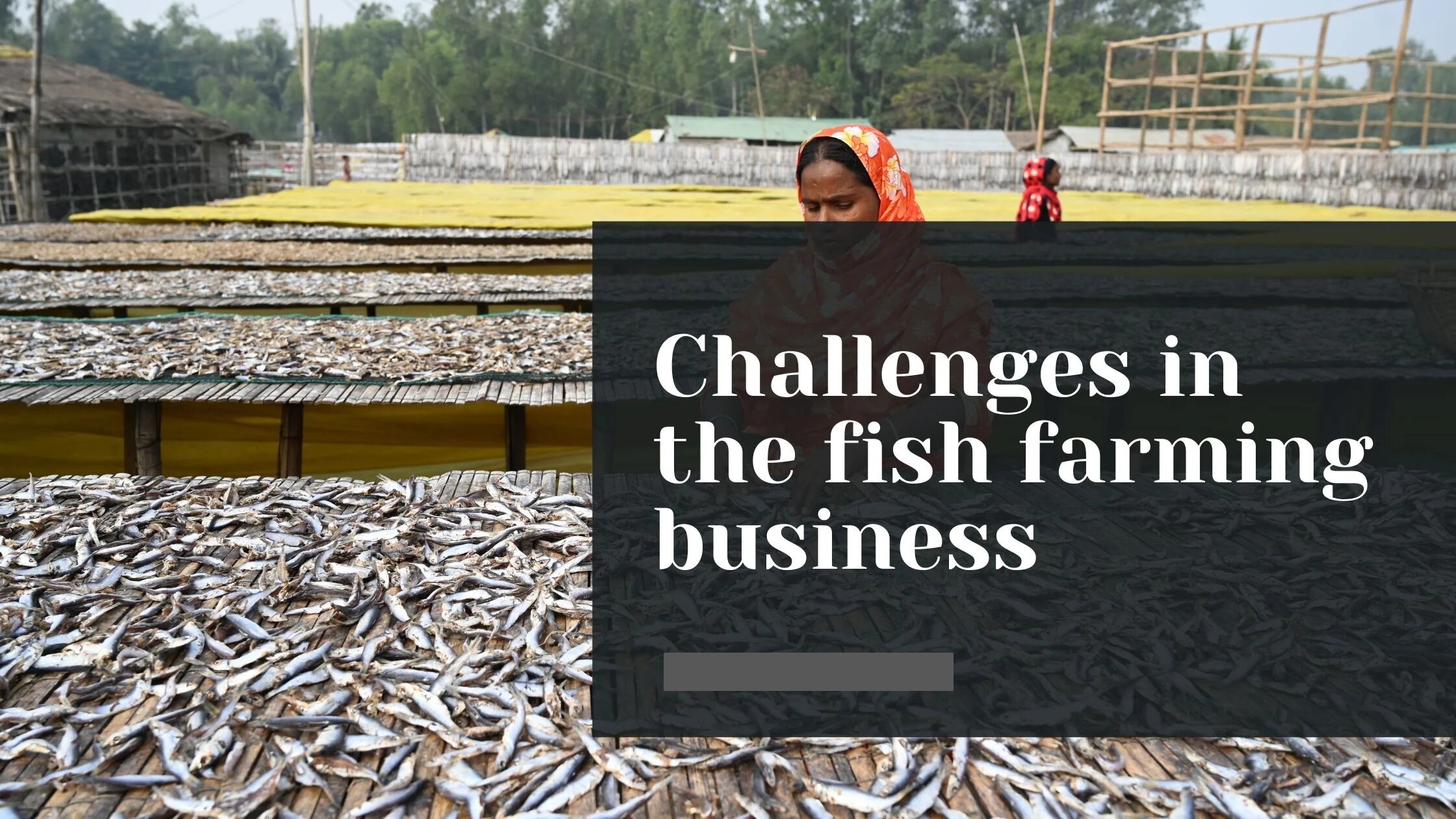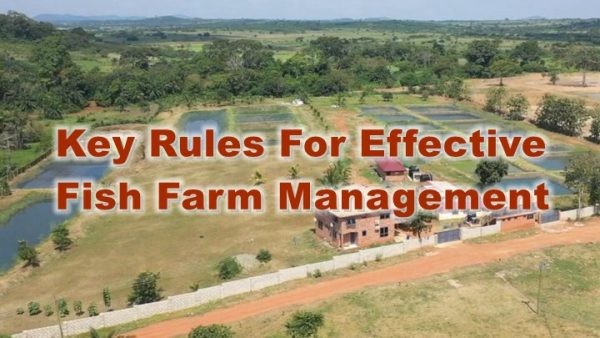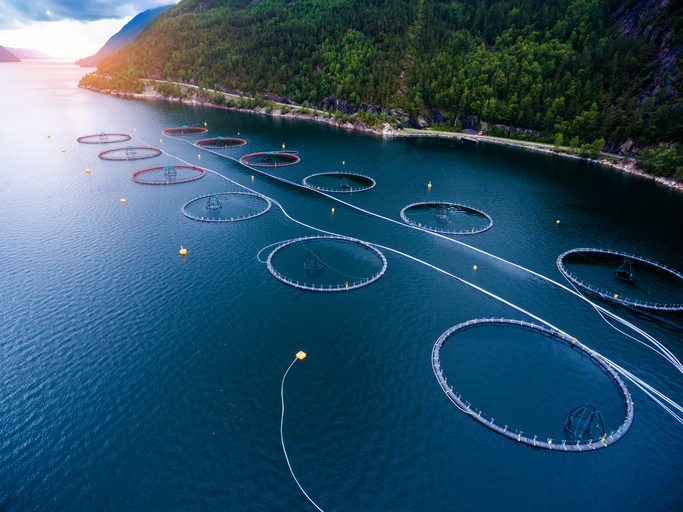Exploring The Basics Of Fish Farming
Drafted by: vijaychourey26@gmail.com
Fish farming, also known as aquaculture, is the practice of cultivating various aquatic organisms, primarily fish, in controlled environments such as ponds, tanks, and even oceans. With the increasing demand for seafood and the depletion of wild fish stocks, fish farming has gained significant importance in meeting global protein needs sustainably. In this article, we'll delve into the world of fish farming, exploring its methods, benefits, challenges, and environmental implications.
Advantages Of Fish Farming
Increased Food Production: Fish farming helps meet the growing global demand for seafood by providing a controlled environment for fish growth, leading to a more reliable and predictable food supply.
Enhanced Seafood Supply
Traditional fishing methods are facing challenges due to overfishing and declining wild fish populations. Fish farming bridges this gap by providing a consistent and reliable supply of seafood. It ensures a steady stream of fish for consumers while reducing pressure on natural fish stocks.
Reduced Pressure on Wild Fisheries
Fish farming plays a pivotal role in conserving wild fisheries by decreasing the need for excessive fishing. This helps in preventing overfishing, which can disrupt marine ecosystems and threaten marine biodiversity.
Environmental Sustainability
Modern aquaculture practices are designed to be environmentally friendly. Closed-system fish farms minimize the risk of pollution and habitat degradation. Additionally, advances in fish feed formulations and waste management techniques contribute to minimizing environmental impacts.
Job Creation and Economic Growth
Fish farming contributes significantly to local economies by creating job opportunities in rural and coastal areas. From hatcheries to processing plants, the aquaculture industry fosters economic growth and stability.
Nutritional Benefits
Farm-raised fish are a rich source of essential nutrients, including high-quality protein, omega-3 fatty acids, and vitamins. These nutrients play a crucial role in maintaining heart health, cognitive function, and overall well-being.
Controlled Production
Fish farming allows for precise control over the production environment. Farmers can optimize factors such as water quality, temperature, and feeding practices to ensure optimal growth and health of the fish.
Reduced Carbon Footprint
Compared to traditional livestock farming, fish farming has a lower carbon footprint. Fish convert feed into protein more efficiently than land animals, resulting in reduced greenhouse gas emissions.
Innovations in Technology
The aquaculture industry continuously evolves with technological advancements. Automated feeding systems, water quality monitoring, and disease management techniques enhance efficiency and productivity.
Water Conservation
Fish farming consumes less water compared to traditional agriculture. Recirculating aquaculture systems (RAS) recycle and purify water, minimizing water waste and pollution.
Diverse Product Offering
Fish farming allows for the cultivation of a wide variety of species, expanding the range of seafood available to consumers. This diversity promotes culinary exploration and reduces pressure on specific wild fish species.
Food Security
As the global population grows, ensuring food security becomes paramount. Fish farming contributes to meeting the protein needs of an expanding population, especially in regions with limited access to coastal resources.
Habitat Restoration
Some fish farming practices involve the restoration of degraded aquatic habitats. For instance, oyster farming can improve water quality and create valuable reef ecosystems.
Research and Innovation Hub
Aquaculture serves as a hub for research and innovation. Scientists and farmers collaborate to develop new techniques, improve fish health, and address emerging challenges.
Community Resilience
Fish farming empowers local communities by providing a reliable source of income and nutrition. It enhances the resilience of coastal regions against economic and environmental uncertainties.
Collaborative Learning
Fish farming encourages knowledge sharing and collaboration among farmers, scientists, and policymakers. This collective effort fosters continuous improvement in aquaculture practices.
Resource Conservation: It reduces the pressure on wild fish populations, helping to preserve aquatic ecosystems and prevent overfishing.
Quality Control: Fish farms allow for better control over water quality, feeding, and disease management, resulting in improved fish health and product quality.
Types Of Fish Farming
Freshwater Fish Farming
Freshwater fish farming involves cultivating fish species that thrive in non-saline water bodies such as ponds and lakes. Popular species include catfish, tilapia, and carp.
Advantages:
Cost-Effective: Utilizing natural water bodies like ponds can be cost-effective as they require less infrastructure.
Diverse Species: A wide range of freshwater fish species can be cultured in ponds, catering to various market demands.
Natural Habitat: Fish have a more natural environment compared to closed systems, promoting better growth.
Marine Fish Farming
Marine fish farming, also known as mariculture, focuses on rearing saltwater fish in controlled ocean environments. Species like salmon, tuna, and shrimp are commonly raised through mariculture.
Advantages:
Diverse Species: Brackish and marine environments can support a variety of seafood species like shrimp, oysters, and marine fish.
Crisis Resilience: Some marine species are resilient to disease outbreaks, providing stability to the industry during crises.
Export Opportunities: Marine seafood products often have international demand, contributing to economic growth.
Brackish Water Fish Farming
Brackish water fish farming is practiced in estuaries and coastal areas where freshwater and seawater mix. It allows for the cultivation of species adapted to these conditions, such as milkfish and mullet.
Pond Fish Farming
Pond fish farming is suitable for small-scale operations and involves creating artificial ponds for fish cultivation. This method is commonly used for raising catfish, carp, and trout.
Cage Fish Farming
Cage fish farming involves placing fish in cages or nets suspended in natural water bodies such as lakes or oceans. This method is efficient for species like salmon, sea bass, and cod.
Advantages:
Large-Scale Production: Cages placed in natural water bodies like lakes or oceans allow for large-scale production of fish.
Water Quality: Fish waste is dispersed in the surrounding water, minimizing pollution around the farm area.
Reduced Land Use: Cages utilize water surfaces rather than land, reducing the pressure on terrestrial ecosystems.
Recirculating Aquaculture Systems (RAS)
RAS utilize advanced technology to recycle and treat water within closed systems, minimizing water waste and environmental impact. This method is suitable for various fish species, including barramundi and sturgeon.
Advantages:
Water Conservation: RAS recycles and purifies water, reducing the need for fresh water exchange and minimizing environmental impact.
Space Efficiency: RAS can be set up in urban areas or locations with limited space, making it suitable for intensive farming.
Controlled Environment: Parameters like temperature, oxygen levels, and feed can be precisely controlled, resulting in optimal growth.
Integrated Multi-Trophic Aquaculture (IMTA)
IMTA involves cultivating multiple species in proximity, creating a symbiotic relationship where waste from one species serves as nutrients for another. For example, shellfish can filter excess nutrients produced by finfish.
Advantages:
Ecosystem Health: IMTA combines various species in a single system, utilizing waste from one species as nutrients for another. This promotes ecosystem balance.
Reduced Environmental Impact: Waste from one species can be minimized by using it to support other species, reducing pollution.
Diversification: Farmers can cultivate multiple species simultaneously, spreading risk and diversifying income sources.
Polyculture Systems
Polyculture involves cultivating multiple fish species together in the same environment, taking advantage of their different ecological niches. This method promotes efficient resource utilization and reduces the risk of disease outbreaks.
Ensuring Quality in Fish Farming
To ensure the quality and safety of farmed fish, strict regulations and monitoring systems are implemented. Regular testing of water quality, disease prevention measures, and responsible use of antibiotics are crucial to maintain healthy fish stocks.
Setting Up A Fish Farm
Choosing the Right Location
Selecting an appropriate location is crucial for the success of a fish farm. Factors such as water quality, temperature, and proximity to markets play a significant role. Adequate access to clean water sources and proper drainage systems are essential.
Selecting Fish Species
Different fish species have varying requirements for water conditions and nutrition. It's essential to choose species that are well-suited to the local environment and market demand. Commonly farmed species include tilapia, catfish, salmon, and trout.
Constructing Ponds or Tanks
Constructing suitable ponds or tanks involves designing structures that allow efficient water exchange and waste removal. Proper aeration and water filtration systems are crucial for maintaining optimal water quality and ensuring the health of the fish.
Fish Farming Practices
Feeding and Nutrition
Providing the right feed and nutrition is vital for the growth and health of farmed fish. Nutritionally balanced feeds that meet the specific requirements of each species are essential. Some farms also incorporate sustainable practices by using alternative protein sources.
Water Quality Management
Maintaining proper water quality is a cornerstone of successful fish farming. Regular monitoring of parameters such as dissolved oxygen levels, pH, and ammonia concentration is necessary to prevent stress and disease outbreaks among the fish.
Disease Control
Disease outbreaks can devastate fish farms. Quarantine measures, vaccination, and maintaining good hygiene practices are essential to prevent the spread of diseases. Regular health checks by experts can help identify potential issues early.
Sustainability And Environmental Considerations
Reducing Environmental Impact
While fish farming can alleviate pressure on wild fish populations, it must also be conducted sustainably to avoid negative environmental impacts. Implementing responsible practices such as proper waste management and minimizing the use of antibiotics is crucial.
Efforts in Research and Innovation
The aquaculture industry continually strives to improve practices through research and innovation. This includes developing disease-resistant fish strains, optimizing feed conversion rates, and minimizing the carbon footprint of fish farming operations.
Challenges In Fish Farming
While fish farming offers numerous benefits, it also faces challenges. Disease outbreaks, environmental impact, and maintaining water quality are constant concerns that require continuous research and innovation to address effectively.
Key Maintenance Practices
Importance of Maintenance in Fish Farming:
Maintaining a healthy aquatic environment is crucial for the wellbeing and growth of farmed fish. Neglecting proper maintenance can lead to poor water quality, disease outbreaks, and stunted fish growth, ultimately impacting the economic viability of the farm.
Regular Water Quality Monitoring
Constant monitoring of water parameters such as temperature, dissolved oxygen, pH, and ammonia levels is essential. Fluctuations in these parameters can stress fish and make them susceptible to diseases.
Disease Prevention and Management
Implementing biosecurity measures, such as quarantine protocols for new fish and controlling the movement of personnel and equipment, helps prevent the introduction and spread of diseases.
Proper Feeding and Nutrition
Balanced and appropriate feeding practices are vital to ensure optimal growth and health. Overfeeding can lead to water pollution, while underfeeding can hinder growth.
Infrastructure and Equipment Upkeep
Regular maintenance of tanks, filters, pumps, and other equipment is necessary to ensure efficient operation and prevent breakdowns that could harm the fish.
Future Trends In Fish Farming
Vertical and Land-Based Farming
Vertical farms and land-based aquaculture facilities utilize limited space more efficiently, reducing the need for large water bodies.
Incorporation of IoT and Data Analytics
Internet of Things (IoT) sensors and data analytics enable real-time monitoring of fish health, feeding patterns, and water quality, leading to informed decision-making.
Alternative Feeds and Nutrition
Research into sustainable alternative feeds, such as insect-based or plant-based diets, aims to reduce reliance on traditional fish meal and fish oil.
Climate-Resilient Farming
As climate change impacts aquatic environments, developing fish breeds that can withstand temperature variations and other stressors becomes imperative.
